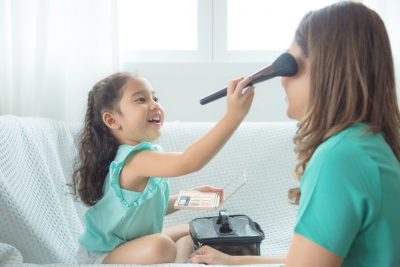Families place trust in companies to ensure that their products are safe before bringing them into their home. Especially if those products are meant for children, it’s expected that producers will diligently vet their items for quality before they’re placed on the market. In recent years, various companies have come under scrutiny for asbestos contamination in their products. Asbestos is a highly hazardous material that can lead to significant health issues, and it’s been explicitly stated by several federal organizations that no level of asbestos is safe in humans.
What is Asbestos?
Asbestos is the commercial name for a naturally occurring material that was heavily used throughout the 20th century. Because of its ability to withstand heat and chemical wear, for decades, it was incorporated into thousands of products to help sustain the structure of homes and buildings. At its height asbestos was also used as a fireproofing additive in household items such as crock pots, hair dryers, and plastics. When a material containing asbestos is distrurbed, microscopic needle-like fibers are released into the air, which can be unknowingly inhaled or ingested. Individuals affected by asbestos exposure most commonly experience chronic respiratory issues such as fluid buildup which induces coughing, chest pain, and breathing issues. As a foreign substance in the body, asbestos embeds itself in the lining of the lungs, which over time develops into respiratory conditions such as mesothelioma, lung cancer, and asbestosis.
Today asbestos is recognized as carcinogenic to humans, and several regulations have been enacted in attempts to protect the public from exposure to this toxin. While many countries have fully banned the material from being used, the U.S. still permits up to 1% in some new materials. Advocacy groups and organizations are continuing to push for further legislation around this toxin, however, it’s essential that families know where they can come into contact with asbestos in everyday life.
Asbestos in Talc-Based Products
While talc is a natural mineral that is usually deemed safe, talc and asbestos deposits often naturally occur alongside one another. This means that asbestos fibers can easily become mixed with talc during mining. Asbestos contaminated talc products have been discovered in several different types of makeup and baby powder across the country. These instances push more conversations around requiring companies to be transparent about where their talcum is being sourced and enabling routine testing on products before they’re on the market. Earlier this year the Food and Drug Administration (FDA) tested 52 of the leading talc-based cosmetics products in the US and found that 20% were contaminated with asbestos fibers. Because there are no laws that force companies to reveal their safety information to the FDA, there is no guarantee that any talc products sold in the U.S. are completely asbestos free.
In 2015 the Environmental Working Group released findings that crayons and a children’s plastic toy crime scene kit were among the list of consumer items found to contain asbestos. Talc’s versatility as a binding agent made it a useful additive, however the lack of testing from manufacturers allowed asbestos to be sold on the market. Children are naturally curious and more inclined to put toys and items in their mouths while playing, leaving them vulnerable to exposure. While asbestos poses a threat to anyone, infants and children are especially sensitive to such toxins. Due to their smaller developing bodies, their lymphatic and nervous systems are especially prone to damage, as they are unable to detoxify chemicals at the rate of an adult.
For the safety of children and loved ones, it’s imperative that families and consumers have more conversations around what is going into their everyday products to help put a complete stop to asbestos use. Eradicating talc-based products from the home is a major way families can avoid bringing this toxin into their homes, and holding companies accountable in being more clear about their safety regulations can help stop asbestos exposure.

